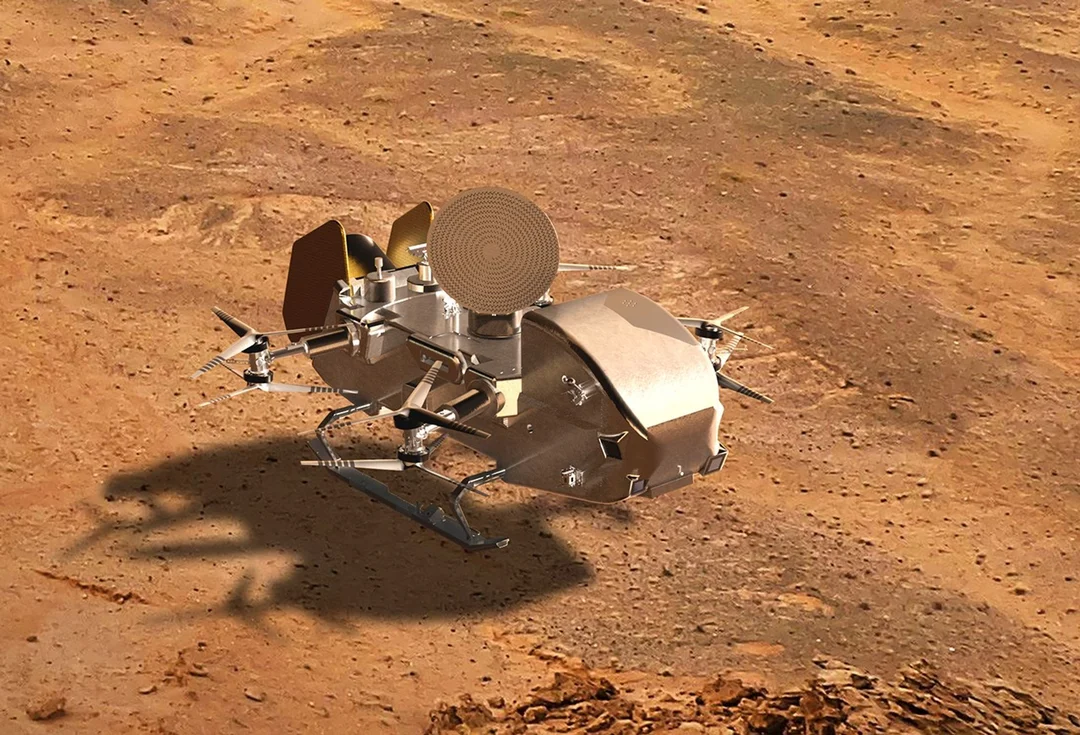
NASA’s Dragonfly Mission: Unlocking the Secrets of Life on Titan
NASA's ambitious Dragonfly mission is setting its sights on Titan, Saturn's largest moon, aiming to unravel the mysteries of how life might have originated. Launching no earlier than 2028, this car-sized rotorcraft will navigate Titan's unique landscape, characterized by dunes, clouds, rain, rivers, lakes and seas.
However, this eerily familiar terrain comes with a twist. At a frigid -292 degrees Fahrenheit (-180 degrees Celsius), Titan's dunes are composed of organic material instead of silicate grains, and its rivers and lakes are filled with liquid methane and ethane, not water. What secrets does this frozen world teeming with organic molecules hold?
The Quest for Prebiotic Chemistry
Dragonfly's mission isn't to discover life itself, but rather to investigate the prebiotic chemistry that could have paved the way for life's emergence. As Zibi Turtle, principal investigator for Dragonfly, explains, "Dragonfly isn’t a mission to detect life — it’s a mission to investigate the chemistry that came before biology here on Earth...On Titan, we can explore the chemical processes that may have led to life on Earth without life complicating the picture."
Unlike Earth, where life has reshaped nearly everything, Titan offers a pristine chemical laboratory. It's a place where all the ingredients for known life – organics, liquid water (in the past), and an energy source – have interacted. Dragonfly's findings could shed light on whether the chemical processes that sparked life on Earth are a universal phenomenon or a rare cosmic occurrence.

Exploring Selk Crater: A Primordial Soup?
A key destination for Dragonfly is Selk crater, a 50-mile-wide impact site covered in organics. Scientists believe that the impact that formed Selk crater melted the icy bedrock, creating a temporary pool of liquid water, under an insulating ice layer. This temporary pool, potentially lasting for thousands of years, could have mixed water with organics and minerals, forming a primordial soup conducive to complex chemistry.
Sarah Hörst, an atmospheric chemist at Johns Hopkins University, describes Selk crater as "essentially a long-running chemical experiment...That’s why Titan is exciting. It’s a natural version of our origin-of-life experiments — except it’s been running much longer and on a planetary scale."
The Dragonfly Mass Spectrometer (DraMS)
The Dragonfly Mass Spectrometer (DraMS) will play a crucial role in analyzing the surface chemistry of Titan. Rather than searching for specific molecules, DraMS will look for patterns suggestive of complex chemistry, such as those found in amino acids on Earth. This instrument could help determine whether Titan's chemistry would typically lead to life or perhaps something else.
Morgan Cable, a research scientist at NASA’s Jet Propulsion Laboratory, emphasizes that if scientists don't explore Titan they can't definitively know the processes that might lead to life. Titan allows scientists to act as "detectives with [their] magnifying glasses, looking at everything and wondering what this is.”
What will Dragonfly discover on Titan? Will it provide clues to the universal nature of life's origins or reveal that the emergence of life is a far rarer phenomenon than we currently believe? The answers may lie hidden in the frozen landscape of Saturn's intriguing moon.
What are your thoughts on the Dragonfly mission and its potential to unlock the secrets of life? Share your opinions in the comments below!